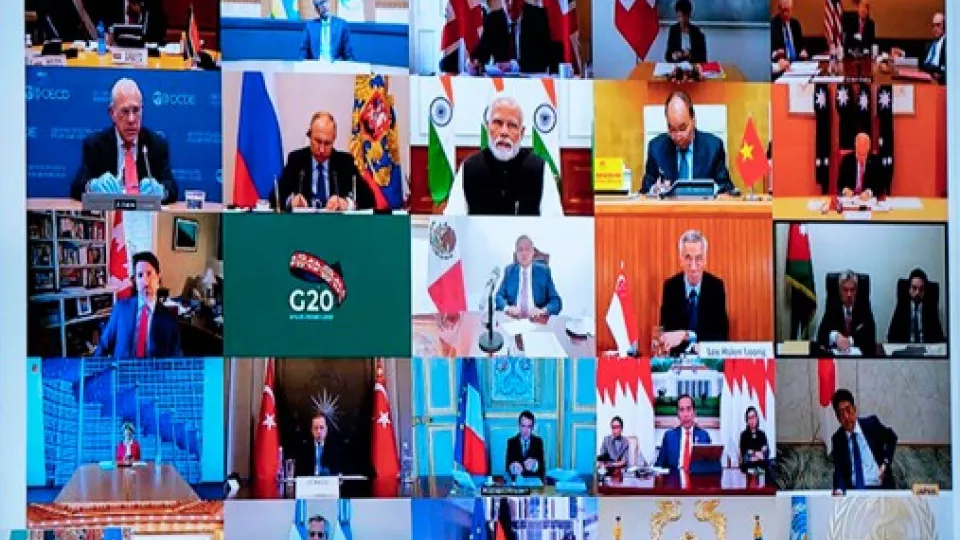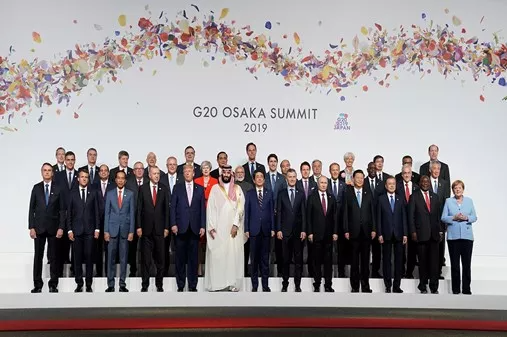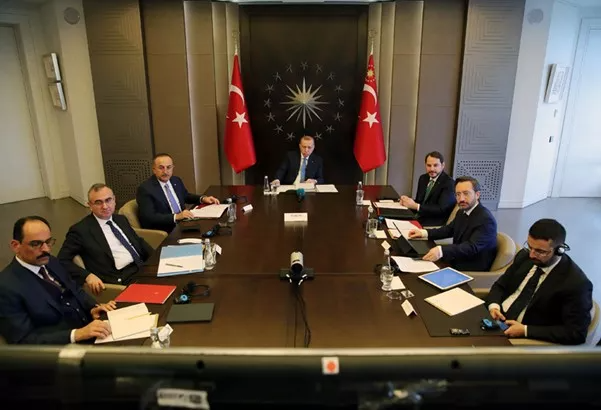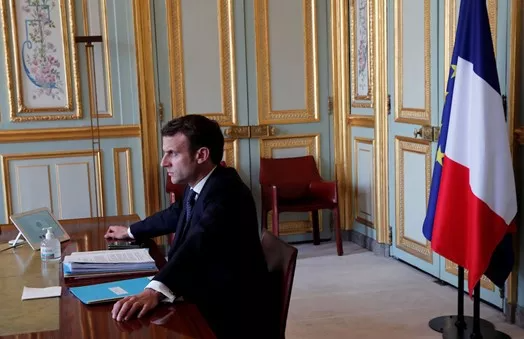How Politicians Project Their Status In Virtual Meetings
During the pandemic, physical summits were replaced by Zoom meetings, and global political leaders had to quickly adjust. How did they visually convey their status in this new world of digital diplomacy?
 The first virtual G20 summit took place on March 26th, 2020 A new study from Lund University in Sweden analysed over 50 photos from the first virtual G20 meeting in 2020.
The first virtual G20 summit took place on March 26th, 2020 A new study from Lund University in Sweden analysed over 50 photos from the first virtual G20 meeting in 2020.
When political leaders meet, there is usually a strict protocol, and national attributes should preferably be avoided. However, when the pandemic struck and diplomacy moved online, something happened.
“Usually when diplomats meet at summits, props are avoided. Neutral locations are preferred, and when official photos are taken, their aim is to project that a meeting of equals has taken place”, says Elsa Hedling, a political scientist at Lund University.
 A "regular" G20 summit in Osaka, Japan
A "regular" G20 summit in Osaka, Japan
A historical example of how important visual protocol can be is the Potsdam Conference in 1945. Additional doors had to be installed so that Stalin, Roosevelt and Churchill could enter the fateful meeting room, where decisions about Germany’s future would be made, at the same time.
A more contemporary example is the so-called "sofa-gate", when Charles Michel of the European Council sat in the chair meant for Ursula von der Leyen of the European Commission at a meeting with the Turkish President Erdogan.
However, when a lot of meetings moved online to virtual conference tools such as Zoom in 2020, there wasn’t much protocol or any precedent to refer to.
“It was interesting to see how different states signaled status through how virtual meetings were set up. It reinforced how important visual diplomacy is; the need to visually highlight one's own nation emerged immediately”, says Elsa Hedling.
 Turkish president Erdogan surrounded by advisors (picture 3)
Turkish president Erdogan surrounded by advisors (picture 3)
Together with her colleague at Uppsala University, August Danielson, Hedling collected all the images that the countries themselves distributed from the first virtual G20 meeting on March 26, 2020, that is, a few weeks after the world shut down. They then looked for signs of key factors in international politics: reliability, trustworthiness, material capabilities and continuity.
The photos were analysed to interpret how the four status resources are signalled in a staged diplomatic situation such as the virtual summit by attention to the dominant elements of a diplomatic theatrical staging: backdrop, actors, venue and props.
The backdrop: The backgrounds were very different (see picture 1). At least one flag appeared behind all the participants, but the number of flags varied greatly, as well as how these were placed in relation to the leader. Both India and Indonesia (with a low GDP) had ten flags, while the United States, China and Japan (with the highest GDP) only had one flag. Under normal circumstances, only one flag per country is allowed at diplomatic summits.
 India's prime minister Modi with many flags behind him, and one on his desk (picture 4)
India's prime minister Modi with many flags behind him, and one on his desk (picture 4)
Actors: The diplomatic delegation seen in the images also varied. Some countries, such as Russia, France, Canada, Japan and South Korea, showed their leaders completely alone, while others, for example Turkey and Vietnam, had many (male) advisors around their leaders (see picture 3). Sometimes it was difficult to understand the position of advisors (see picture 4). In some cases, they were clear status symbols, for example, the United States placed its Secretary of the Treasury and the Chairman of the Joint Chiefs of Staff next to President Trump (picture 5), as a clear signal of the economic and military strength of the United States.
 the United States placed its Secretary of the Treasury and the Chairman of the Joint Chiefs of Staff next to President Trump (picture 5)
the United States placed its Secretary of the Treasury and the Chairman of the Joint Chiefs of Staff next to President Trump (picture 5)
Venue: Some leaders sat in seemingly ordinary conference rooms, but for other states, the location had a symbolic value. China's leader Xi Jinping sat in the well-known eastern hall of the Great Hall of the People in Beijing, which is used for legislative and ceremonial purposes by the People's Republic of China and the Communist Party of China (see picture 6). The French president Emmanuel Macron also attended the meeting from an ornate hall in the Élysée Palace (see picture 8). This choice symbolizes wealth and prestige, and signals material resources and historical continuity. Trump participated from the "Situation Room" in the White House, (picture 5), another symbol of US military power.
 China's leader Xi Jinping in the well-known eastern hall of the Great Hall of the People in Beijing (picture 6)
China's leader Xi Jinping in the well-known eastern hall of the Great Hall of the People in Beijing (picture 6)
Props: What other things were visible in the images? The French president had a bottle of hand sanitizer placed in front of him during the meeting (picture 7), which was in line with France's rhetoric about a "war on the virus". In this category, tie colors were also studied, where blue signals credibility and red aggressiveness (the majority chose red or blue ties).
 Emmanuel Macron in the Élysée Palace, with sanitizer on his desk (picture 7)
Emmanuel Macron in the Élysée Palace, with sanitizer on his desk (picture 7)
During the almost two years of the ongoing pandemic, the variation in how diplomats present themselves at virtual meetings has gradually diminished.
“To some extent, you learn from one another, and gradually there has been a streamlining. In some cases there are also stricter instructions from organizers. Initially, however, the lack of a visual protocol led to new opportunities for states to signal status. It may be taking place in a digital landscape now, but diplomacy still rests on the same cultural and symbolic practices”, concludes Elsa Hedling.
Publication: Danielson, A., & Hedling, E. Visual diplomacy in virtual summitry: Status signalling during the coronavirus crisis. Review of International Studies, (2023). DOI: 10.1017/S0260210521000607
Original Story Source: Lund University

 Alerts Sign-up
Alerts Sign-up